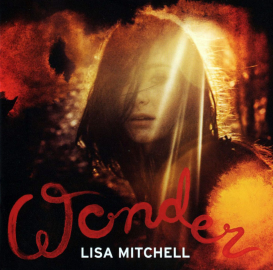Date Posted: October 28, 2011
Print Edition: October 26, 2011
Tom Waits
Bad As Me
Never before has Tom Waits released such a quick and concise album with such success. He gets in and gets out without overstating or restating. Bad As Me, Waits’ first proper full-length release since 2004’s Real Gone, is a focused batch of songs and a no-brainer pickup for fans of his raspy and engaging growls. All of the various styles used by Waits on this album, from the bluesy opener “Chicago” to the heartbreaking and vulnerable “Last Leaf On The Tree,” come through with wonderful results. The horns, the percussion, the guitars all remind listeners of those breezy, sentimental lounge bands from the 1930s and 40s; however, the waves of blistering energy and angst Waits brings to the music works without him having to ditch his classic formula. The conviction of his storytelling has never been gutsier or more acute.
Justice
Audio Video Disco
Justice’s newest album is a perfect combination of energy, tight distortion, and infectious bass. The vocals on this album are a pleasant surprise with a mix between their previous work and a style oddly reminiscent of OK Go’s last album Of The Blue Colour Of The Sky. Although they mix rock and indie styles and themes into their work, Justice has always been firmly placed in the electro genre, and many of the songs on this album show the hallmarks of that style – many are lyric-less or wordless and instead put the focus on either variations on a melody or a single line than is sung over and over; the title track “Audio Video Disco,” only uses those three words. Other tracks, however, push Justice into more of a pop genre with surprisingly full sets of lyrics – “On ‘n’ On,” for example, has four or five completely different verses that are unexpectedly satisfying from a melody-before-lyrics band. All in all, Justice has produced a stupidly solid album by pulling any elements they like from any genre – take “Ohio,” which begins with an Eagles-esque guitar riff, and proceeds to support it with bass drops that would be at home in a club. This electro-pop duo is like two kids playing in a sandbox – the resulting album is nothing short of entertaining.
Lisa Mitchell
Wonder
Wonder, released in 2009, is the first LP of folk/pop singer Lisa Mitchell and this 21-year-old Australian did not disappoint. “Whimsical” is perhaps the adjective most suited for this album, as Mitchell takes great delight in incorporating a good pop melody with post-country quirks, unexpected beats, and a joyful folksiness that makes a listener want to light a sparkler and dance around a fire. Mitchell’s vocals, while strong enough to deliver her ballad “Incomplete Lullaby,” are essentially light and pleasingly fragile, lending a unique tone to an album bursting with folksy percussion and repetition. From the radio friendly yet original “Hark” to the quirkily whimsical “Coin Laundry,” (a standout track on the album) Mitchell provides listeners with a sensory experience as she evokes beautiful or charmingly quirky images through her lyrics and melodies.
Mayer Hawthorne
How Do You Do
What’s wrong with a little blue-eyed soul? It’s clear that Mayer Hawthorne is driven by a love for the music of the Motor City, but the Los Angeles DJ does a lot more than rehash classic R&B influences on his second LP. How Do You Do is a confident, modern and expertly-produced soul record that takes its cues from Cee Lo Green as much as Smokey Robinson. What started as a throwaway side-project two years ago has developed into a sure-footed and freewheeling exploration of the fine contours and nuances of the genre. Hawthorne’s distinctive and soulfully raspy falsetto ties together the laid-back send-off of “The Walk” and the 60s Motown jive of “Hooked.” Perhaps my enjoyment of the record is due to the fact that it’s so unlike anything else I’ve heard this year. Still, I feel like it has to be more than the novel context that gives How Do You Do so much heft. It never feels contrived or like it’s reaching to be more than it is: a swaggering celebration of the power of soul music.






